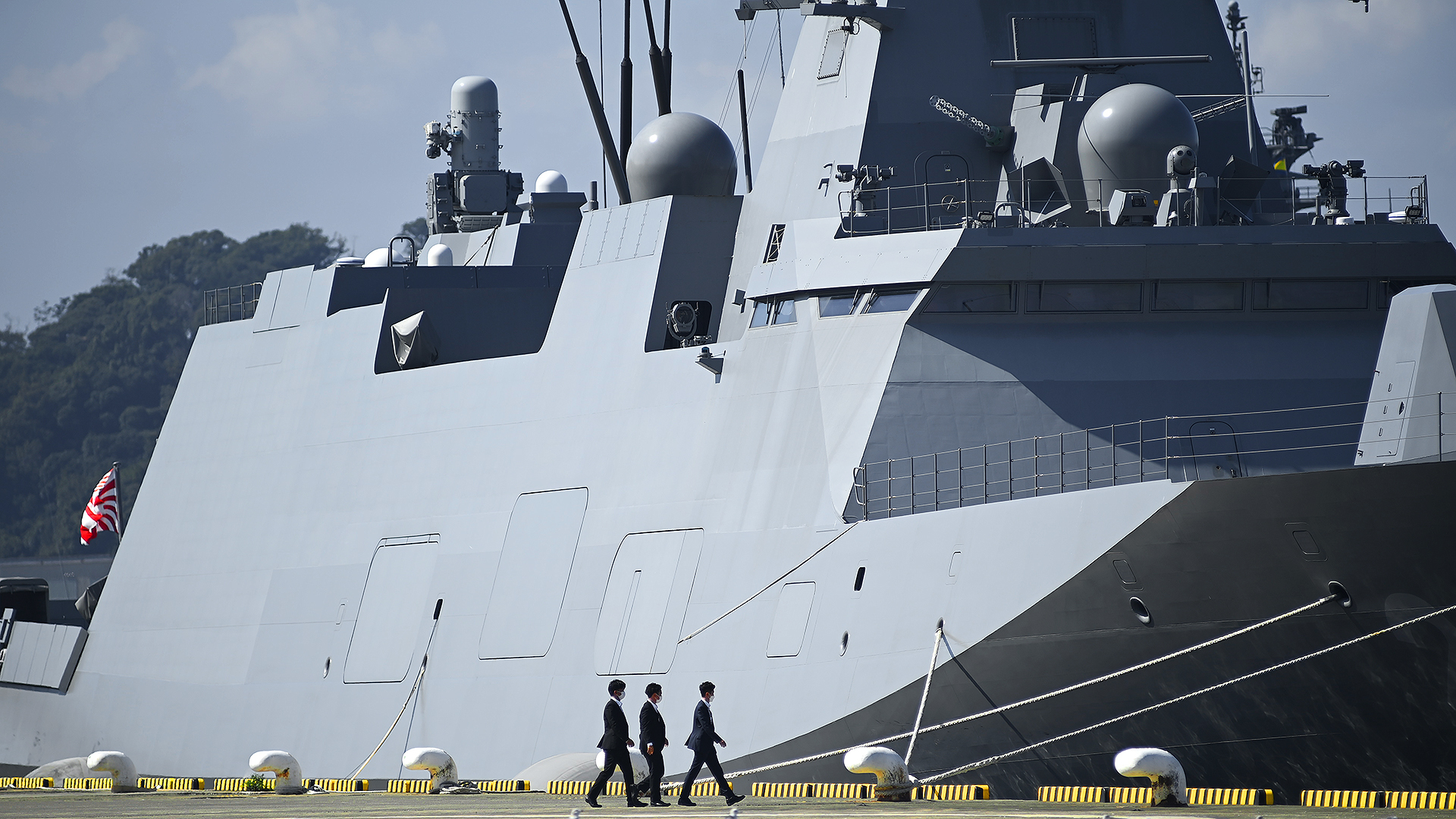On November 14, Japan’s eighth Mogami class frigate, JS Yūbetsu, was launched in Tamano City, Okayama Prefecture, in the southern part of Japan’s Honshu island. Mogami class 30FFM Multi-Function Frigates are set to become the backbone of the Japan Maritime Self-Defense Force (JMSDF), and are packed with a wide array of advanced features. The stealthy frigates, which feature a futuristic appearance given their clean, geometric profiles, will have the ability to perform various mission-sets for the JMSDF. With this in mind, we thought it would be a good time to profile these fascinating and highly automated ships.
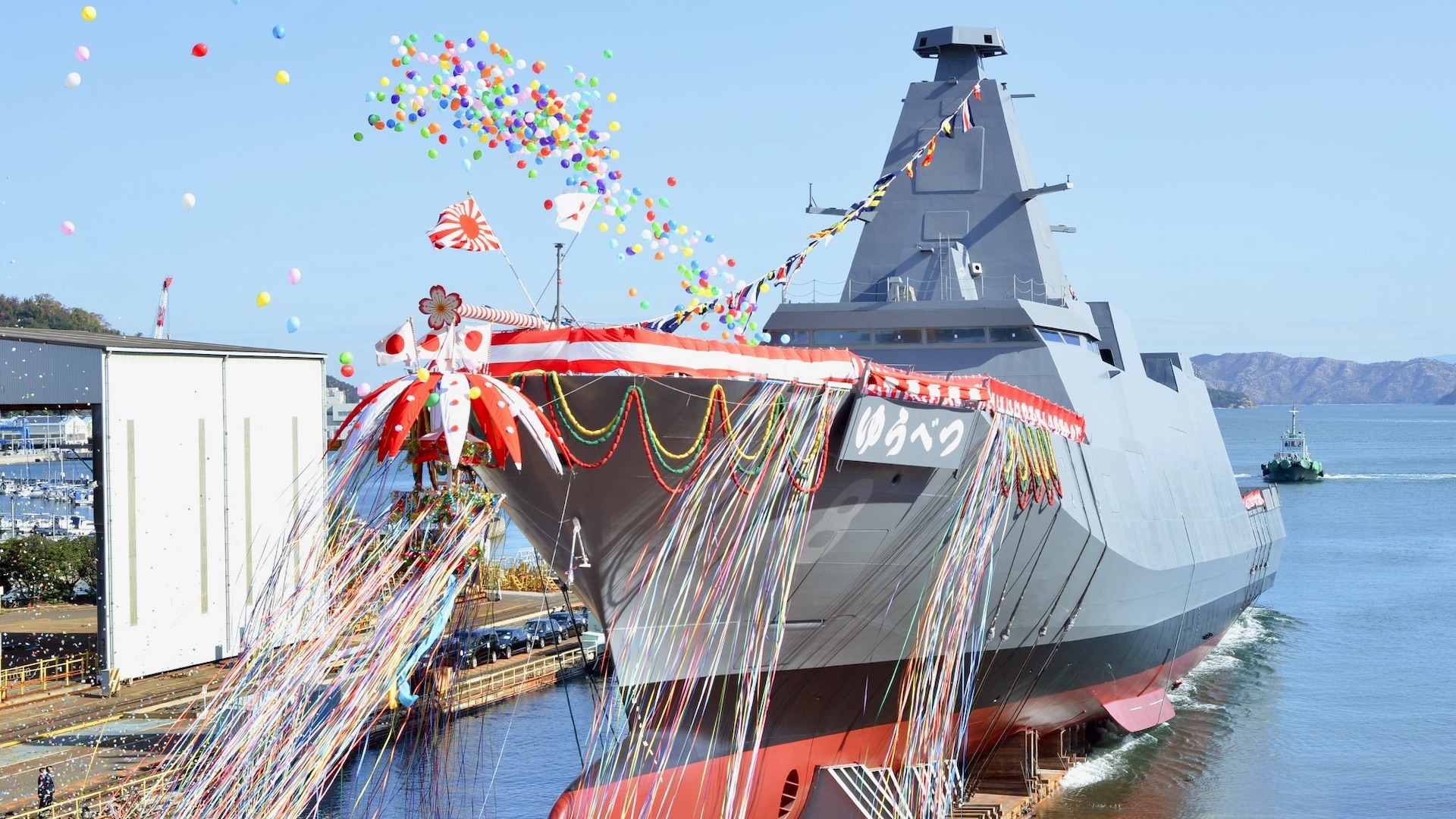

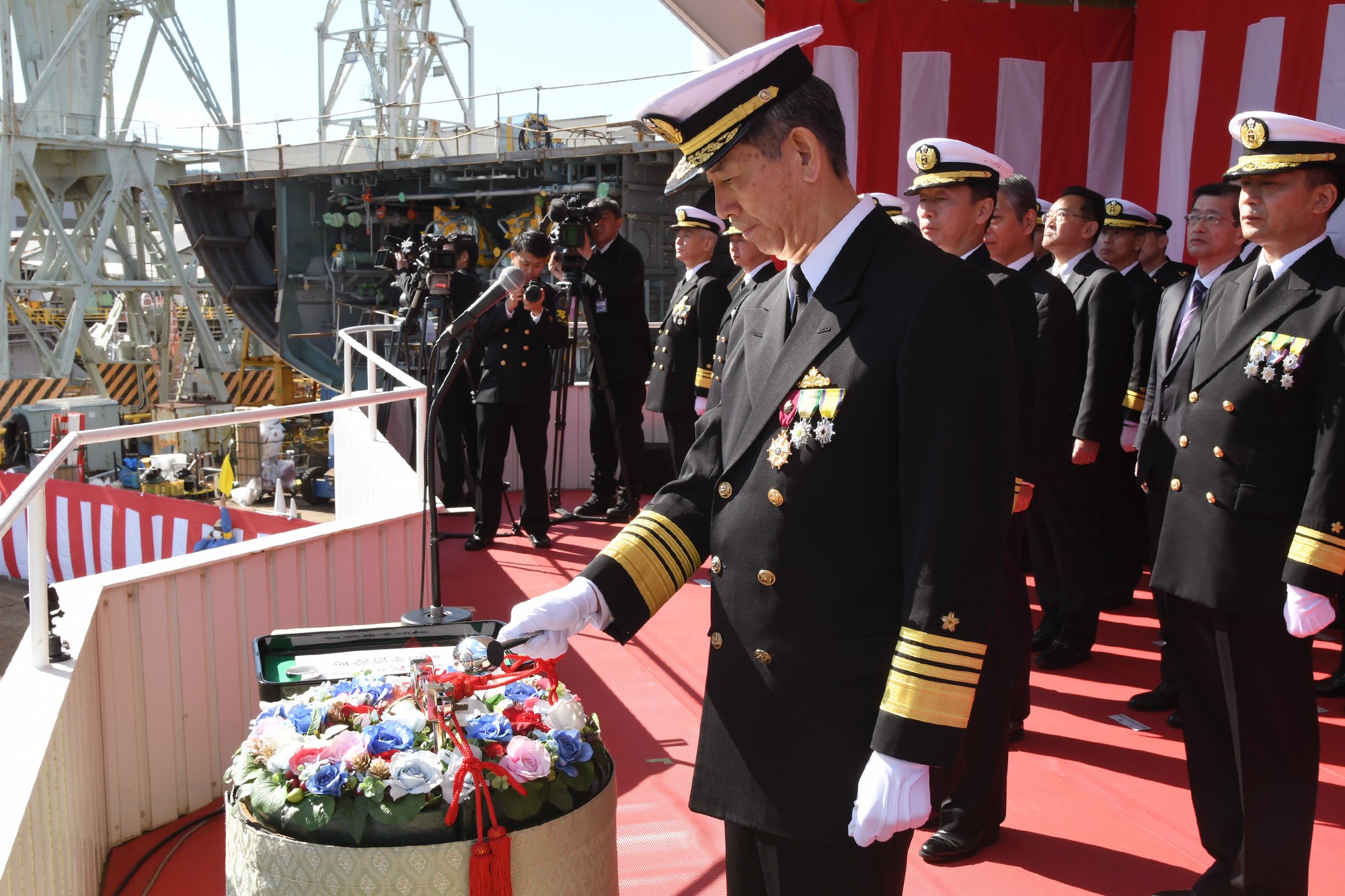
The Mogami class is capable of everything from surveillance to minesweeping operations as well as anti-surface, anti-air, and anti-submarine warfare. The frigates feature advanced electronic warfare and sensor suites. But above all else, they are designed to be operated by remarkably small crews. In essence, they will help the JMSDF to be able to do far more with far less.

JS Yubetsu (FFM-8) launching ceremony at Mitsubishi Heavy Industries Maritime Systems November 14, 2023. Hunini via Wikimedia Commons, CC-BY-SA-4.0
Yūbetsu is under construction by prime contractor Mitsubishi Heavy Industries (MHI). The vessel is named after Japan’s Yūbetsu River in Hokkaido, the country’s second-largest island — all frigates within the Mogami class are, in fact, named after famous Japanese rivers. MHI has already delivered three ships in the class to the JMSDF — JS Mogami, Noshiro, and Mikuma, which were commissioned in April 2022, December 2022, and March 2023, respectively. The second Mogami class vessel, JS Kumano, was built by subcontractor Mitsui Engineering and Shipbuilding, and was commissioned ahead of JS Mogami in March 2022.
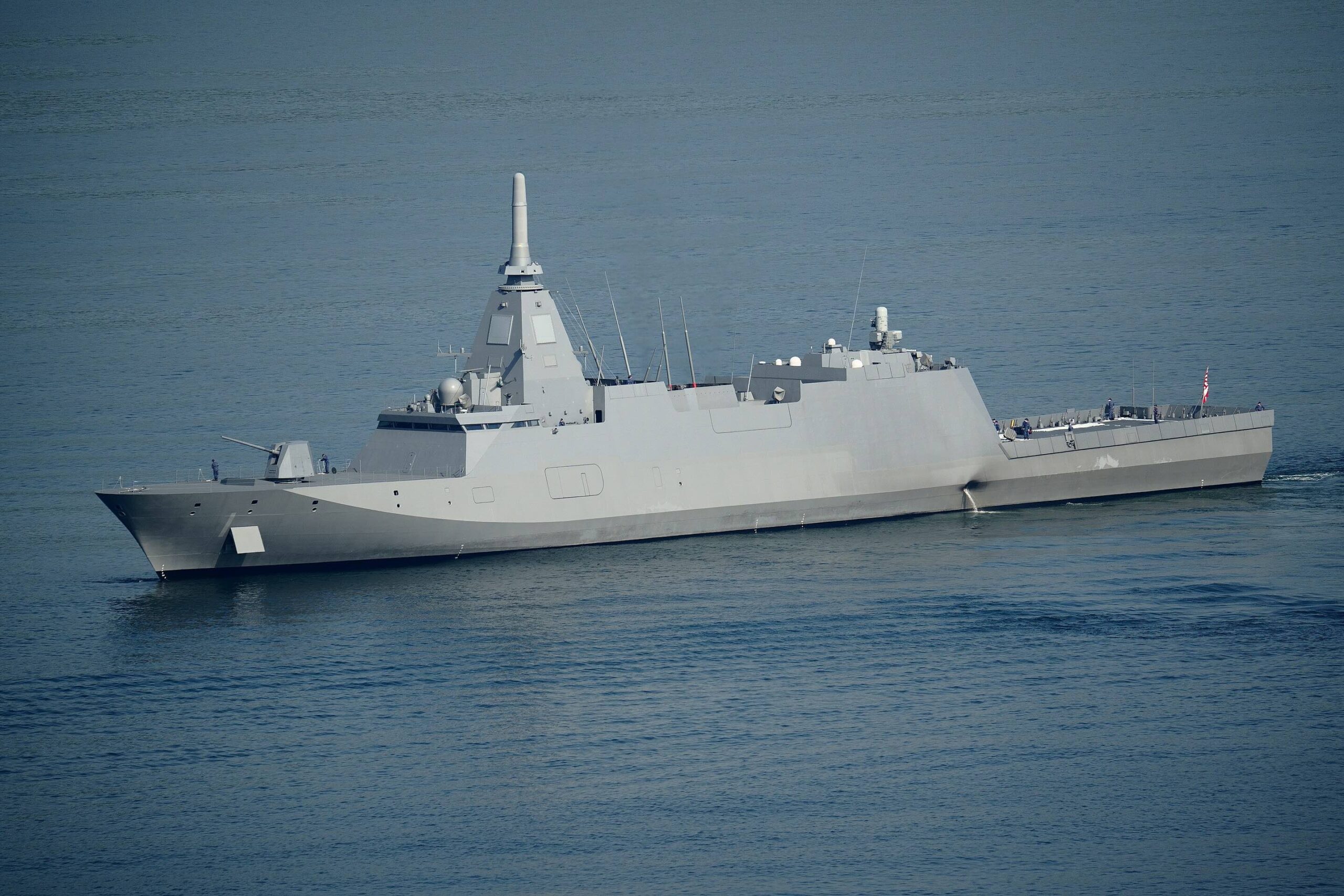
MHI is under contract to deliver frigates five through 10 to the JMSDF, the first four of which have been named as JS Yahagi, Agano, Niyodo, and Yūbetsu. Yahagi and Agano are set to be commissioned by the end of the year, with plans for Niyodo and Yūbetsu to be commissioned sometime in 2024.
A total of 12 Mogami class ships are expected to be procured by the JMSDF, the last of which is set to have finished construction by 2027. The country’s Mogami class frigates are expected to eventually replace the JMSDF’s older Asagiri class destroyers and Abukuma class destroyer escorts. The lead vessels in both of those classes were commissioned in 1988.
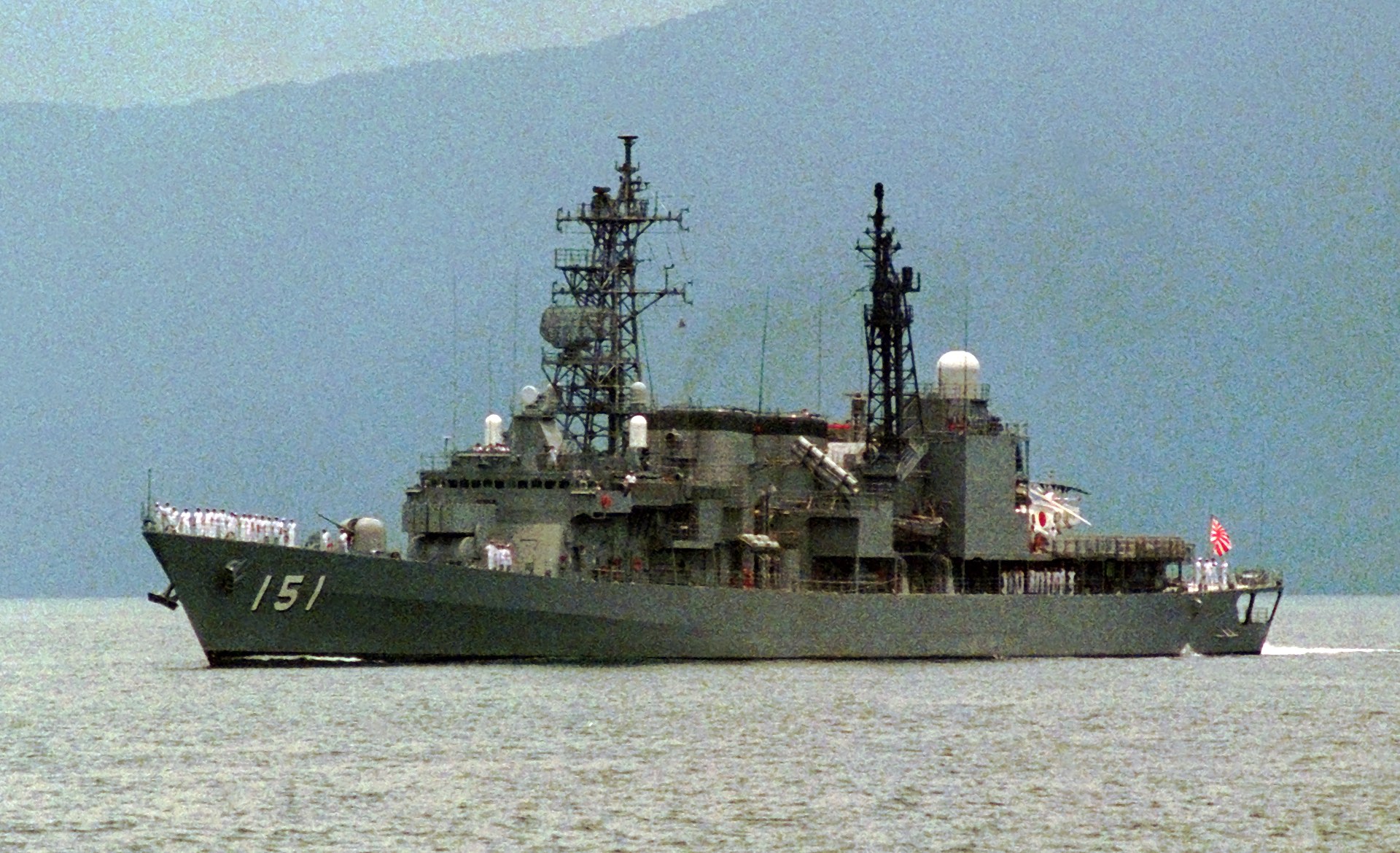
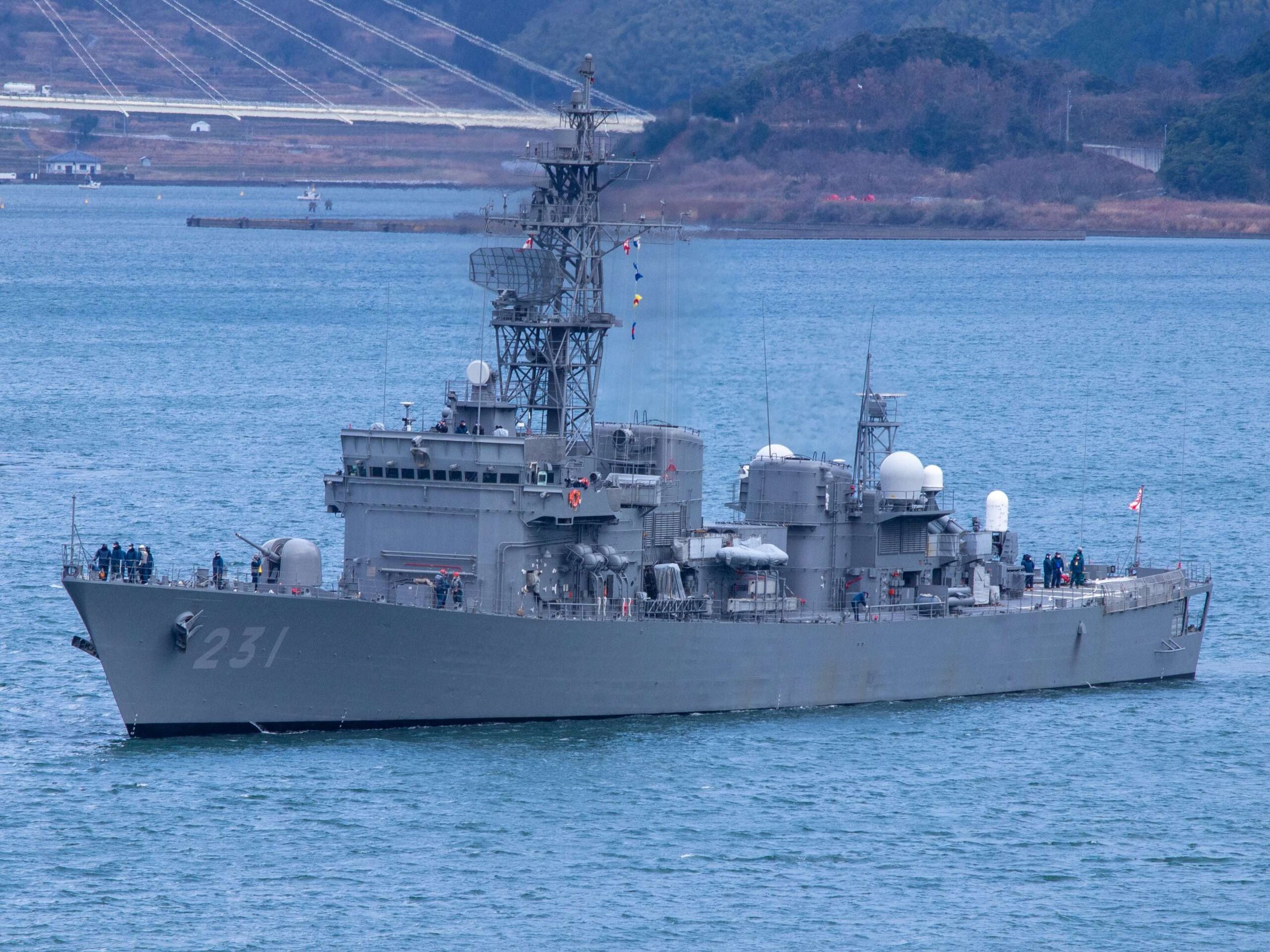
Mogami class frigates all boast a standard displacement of around 3,900 tons, and a full displacement of some 5,500 tons. For comparison, Asagiri class destroyers have a slightly lower displacement; 3,500 tons standard and 5,200 tons full. It should be noted that the Asagiri class destroyers have a lower displacement than many other destroyers in the JMSDF fleet. At the lower end, Akizuki class destroyers have a standard displacement of 5,000 tons and a full displacement of 6,800 tons, while the country’s Aegis-equipped Maya class destroyers have a standard displacement of 8,200 tons and a full displacement of 10,250 tons.
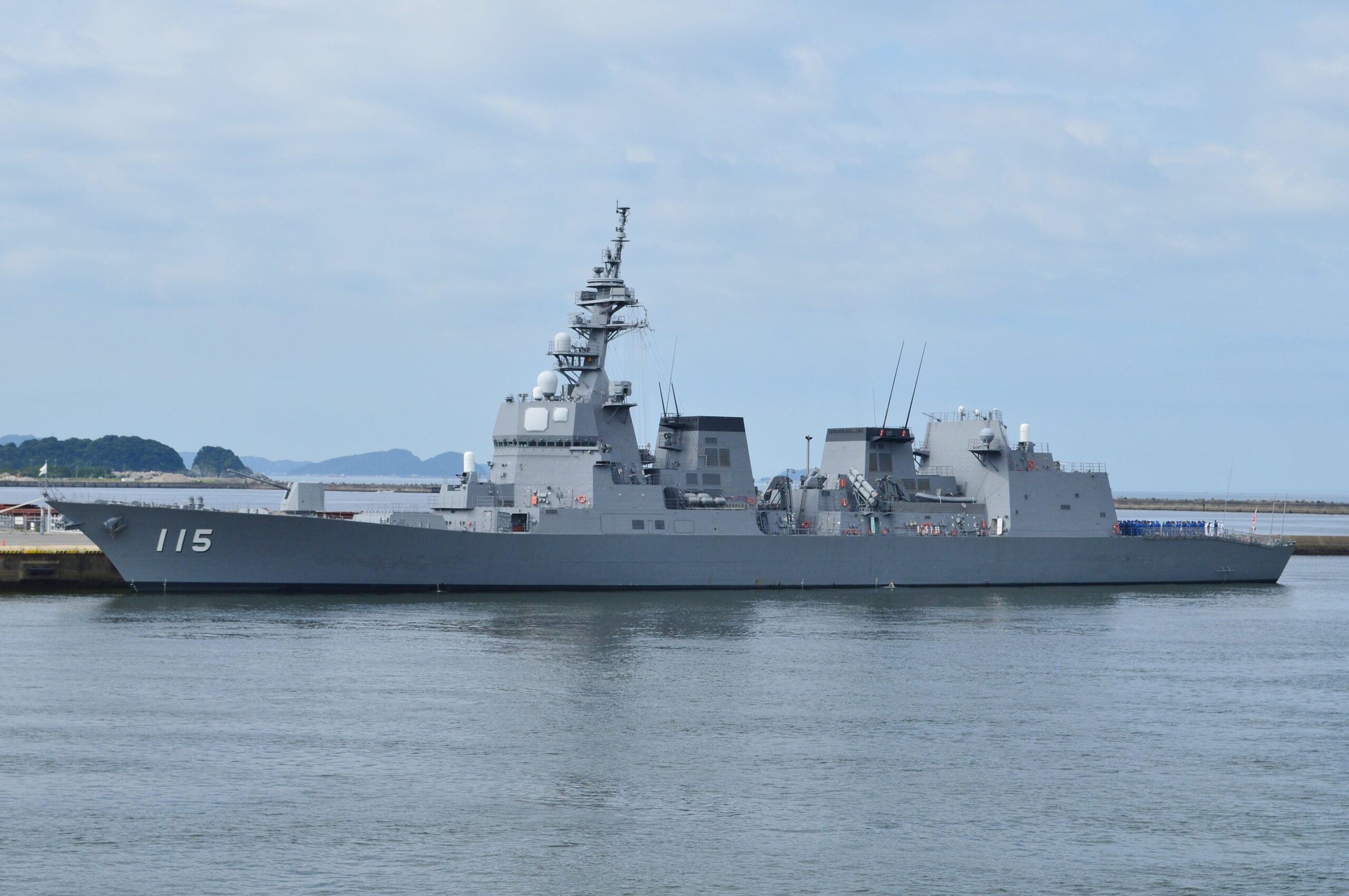
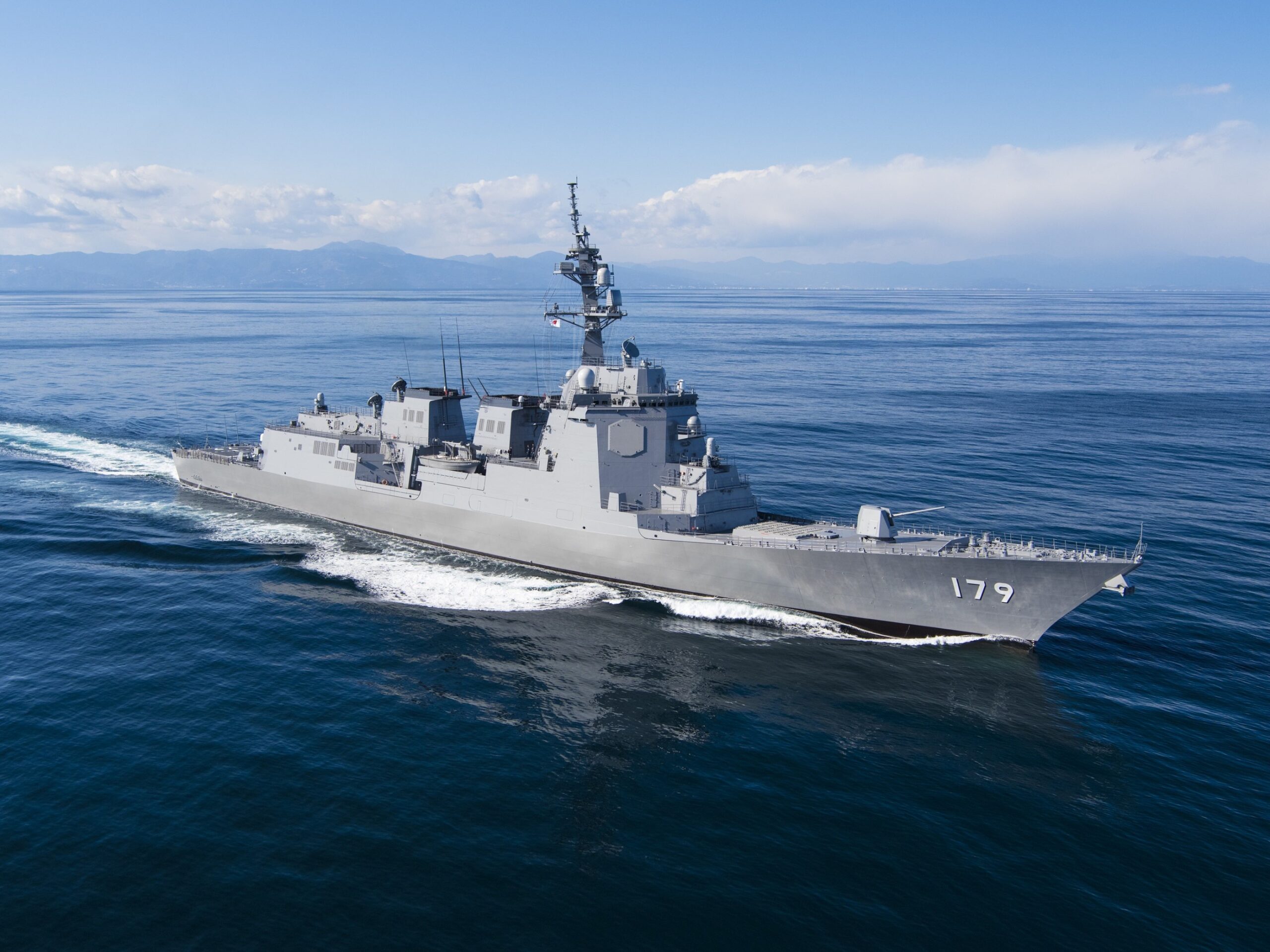
The frigates are roughly comparable to Asagiri class destroyers in terms of their length and beam measurements, too. Yūbetsu, along with the other vessels in its class, is roughly 435 feet long and boasts a 53 foot beam. Asagiri class destroyers, on the other hand, run just over 449 feet long and have smaller beams measuring just under 48 feet.
Propulsion-wise, ships of the Mogami class are powered by a single Rolls-Royce MT30 gas turbine and two MAN Diesel V28/33DD STC engines. The ships can achieve high speeds in excess of 30 knots (some 34.5 miles per hour).
Each frigate is armed with BAE Systems’ Mark 45 5-inch (127mm) naval gun system, alongside two 12.7mm remote weapon systems by Japan Steel Works. They also boast Lockheed Martin’s 16-cell Mk 41 vertical launching system for launching MHI’s Type 03 Chu-SAM surface-to-air missiles. The vessels can fire eight ship-launched variants of MHI’s Type 12 anti-ship missile. Raytheon’s SeaRAM system provides a close-in last line of defense against incoming missiles and even small boats. Sea mines, exactly which variants are unclear, along with mine-laying equipment can be deployed for mine warfare work.
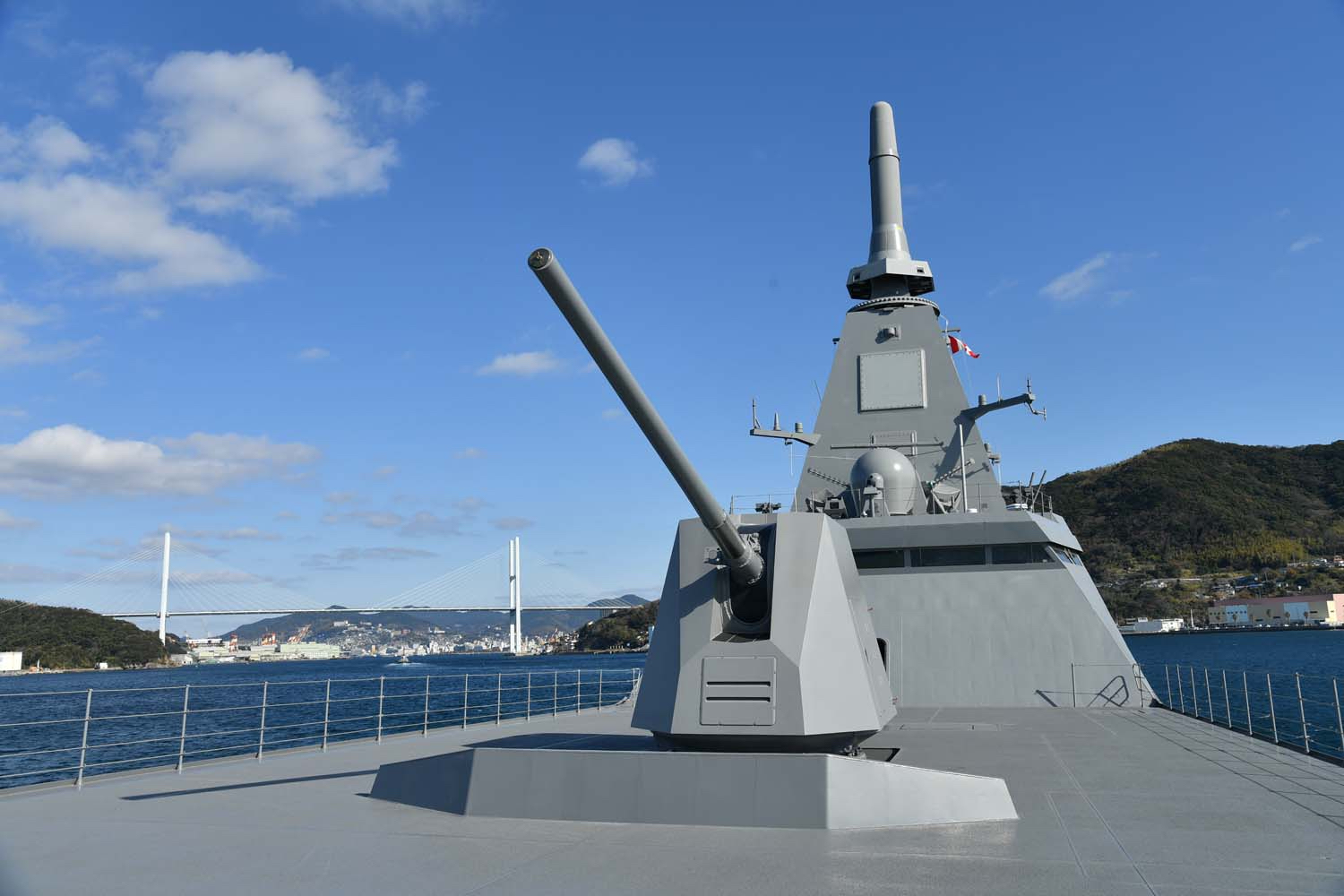
In terms of technology, the frigates feature advanced electronic warfare suites. Mogami class ships in service, and those soon to be, feature the NOLQ-3E system, which integrates passive radar and electronic attack capabilities, and a chaff dispenser for launching countermeasures amid anti-ship missile attacks.
With regards to sensors and radars, the frigates boast Mitsubishi Electric’s OPY-2 X-band multi-purpose active electronically scanned array (AESA) radar and Mitsubishi Electric’s OAX-3 electro-optical/infrared (EO/IR) sensors. Owing to their multi-mission purpose, the frigates feature the NEC OQQ-25 variable depth sonar (VDS)/towed array sonar system (TASS) for anti-submarine warfare (ASW), and a hull-mounted OQQ-11 anti-mine sonar from Hitachi. The vessels also feature the OYQ-1 combat management system and the OYX-1-29 information display/processing system.
Antennas and tactical data links are stored in the UNIted COnbined Radio aNtenna (UNICORN) NORA-50 integration mast.

To the rear of the frigates, a landing deck and single-hagar can support a Mitsubishi SH-60L Sea Hawk helicopter. Mogami class frigates are also capable of deploying and recovering two of MHI’s OZZ-5 uncrewed underwater vehicles (UUV), and two uncrewed surface vehicles (USV) — the exact type remains unclear — for minesweeping. They also feature two rigid-hull inflatable boats (RHIBs).
6.jpg?strip=all&quality=85)
All of this is packed into a reduced signature design which will provide greater survivability for the class, allowing it to look like a much smaller vessel when operating in highly trafficked waterways or littoral areas. Overall radar detection range is also decreased, making long-range detection and engagement more challenging for enemy forces.
Maybe the biggest differences between the Mogami class frigates and the Asagiri class destroyers they will replace is their respective crew sizes. The latter warship typically has a complement of 220, yet the Mogami class ships are designed to be operated by a crew of just 90. This is remarkably small for such a large ship. High levels of automation make this possible, probably the best example of which is their advanced Combat Information Center (CIC), which comprise a giant 360 degree circular wall.
We profiled this highly unique innovation back in 2019. It no doubt adds to the frigates’ futuristic vibe and will allow sailors to execute tactical tasks, steering, engineering, navigation, damage control, fire suppression, communications, and other functions via its multi-functional consoles and open-architecture software. Augmented reality will also be a part of the system, displaying key information, such as target tracks and potential hazards, over external views.

Being able to undertake varying mission sets with small crew sizes remains at the heart of why efforts to field the Mogami class of frigates were initiated by Japan in the mid 2010s.
For years now, concerns have been raised about available numbers of JMSDF personnel to man traditional ships, including destroyers. Overall recruitment rates across Japan’s Self-Defense Forces are down, with the JMSDF particularly hard-hit, amid the country’s aging population and declining birthrate. This comes amid rising geopolitical tensions in the Indo-Pacific, specifically mounting security threats to Japan’s home islands, from China and North Korea. Alongside the defense of its home islands, Japan also has territorial claims over the disputed Senkaku Islands in the East China Sea, which would likely prove vulnerable in a potential conflict with China.
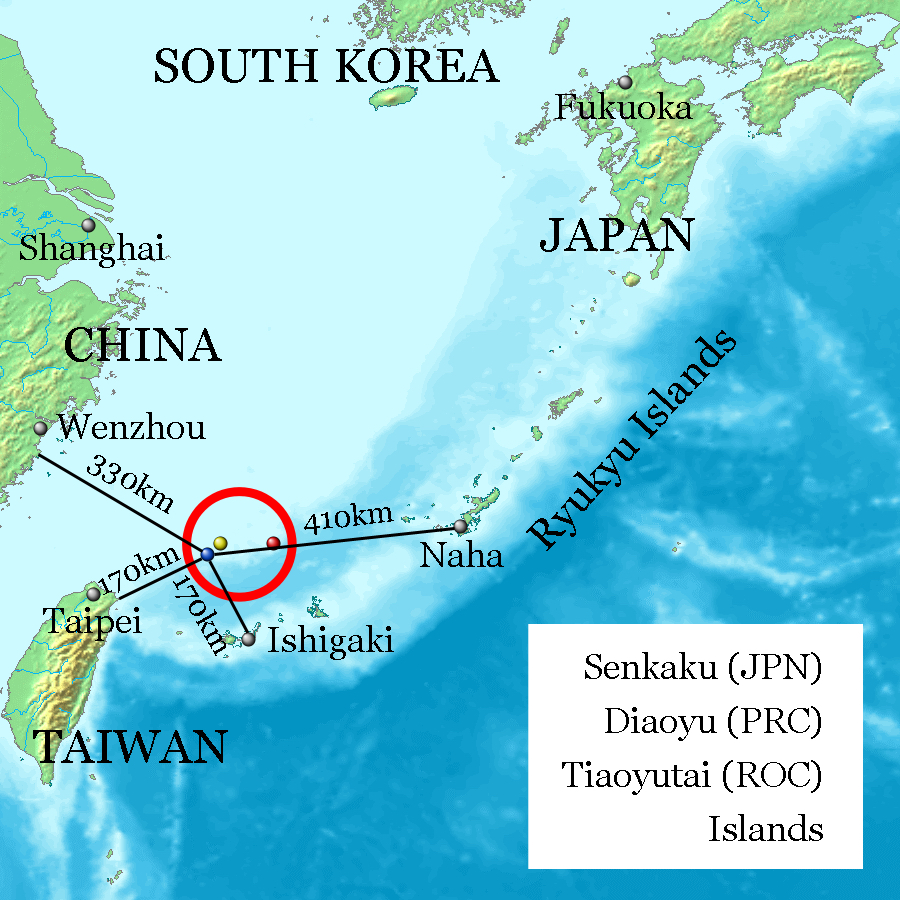
Alongside the fielding of the 12 Mogami class frigates, Japan has looked to expand its naval capabilities overall in light of these concerns and amid China’s ballooning shipbuilding capacity. As The War Zone has noted previously, key naval programs for the country include building two cruiser-like, Aegis-system equipped vessels (ASEV), as well as continuing modifications to its two Izumo class carriers to allow them to embark F-35B short takeoff and vertical landing (STOVL) jets.
Japan has committed to vast defense spending in recent years — unveiling an expansive $320 billion five year military spending plan last year, alongside a sizeable $52.9 billion 2024 Fiscal Year defense budget request. Yet compared to other JMSDF warships, Mogami class frigates seem bewilderingly well priced for their supposed capabilities.
The first two vessels, which were ordered in 2018, cost less than $500 million USD each, with an estimated price tag between $370 million and $410 million per frigate. More recent estimates suggest even lower procurement costs into the low $300 million range. This is substantially less than a Freedom class Littoral Combat Ship, for instance.
With that said, however, Japan is already looking beyond its 12 30FFMs. Originally, the country had intended to procure 22 Mogami class frigates as part of its Mid-Term Defense Program (MTDP) for the 2019–23 fiscal years, which got approval in late 2018. However, as part of its 2024 Fiscal Year budget request, Japan’s Defense Ministry scaled this figure back to 12. At the same time, plans were laid to procure 12 ‘new FFM’ frigates on top of the 12 Mogami class ships.
Based on the Mogami class design, the ‘new FFM’ frigates will boast a larger standard displacement in the region of 4,880 tons. The full displacement will be some 6,200 tons. The length and beam will also be increased compared to the Mogami class. Other similarities to the Mogami class include propulsion and speed as well as a relatively small crew size.

Significantly, the new FFM frigates will focus more on the air defense role, with MHI adopting the nomenclature FFM-AAW — meaning Multi-Function Frigate – Anti Air Warfare. The frigates will feature a 32-cell, rather than 16-cell, vertical launching system. The improved, longer-range ship-launched version of the Type 12 anti-ship missile will be fired from the frigates, as well as Japan’s “new ship-to-air guided missile,” or A-SAM — providing the country with improved coastal defense capabilities.
In addition to supporting a single SH-60L helicopter, the frigate will also be able to launch an uncrewed aerial vehicle (UAV) as a “flying sensor,” thus expanding the ships’ intelligence and surveillance gathering abilities. The mast is also redesigned to include upgraded sensors.
In terms of schedule, MHI anticipates beginning construction on the vessels in 2027, with the completion of all 12 ships by 2036. Based on available data, the newer frigates will end up costing more than the Mogami class ships. In August of this year, the JMSDF requested some $1.16 billion to construct the first two new FFM frigates.
The rapid construction of Japan’s Mogami class frigates is certainly impressive, as are their capabilities, especially the level of automation they are deploying in order to realize such a small crew size. On that, it will be interesting to see how it works out. Other minimally manned crew concepts have been challenging to sustain operationally, with the Littoral Combat Ship being the most glaring example of this reality. Regardless, these ships are clearly designed to pack balanced capabilities at a very attractive price and are certainly worth keeping an eye on, as are their bigger and more heavily armed cousins that are now on the horizon.
Contact the author: oliver@thewarzone.com
